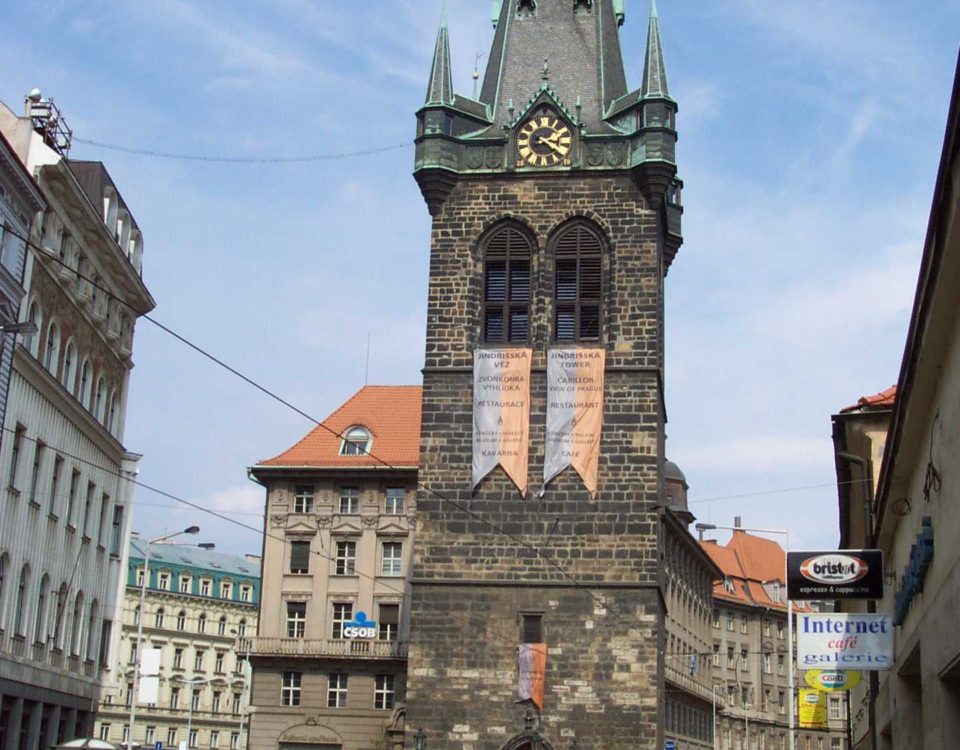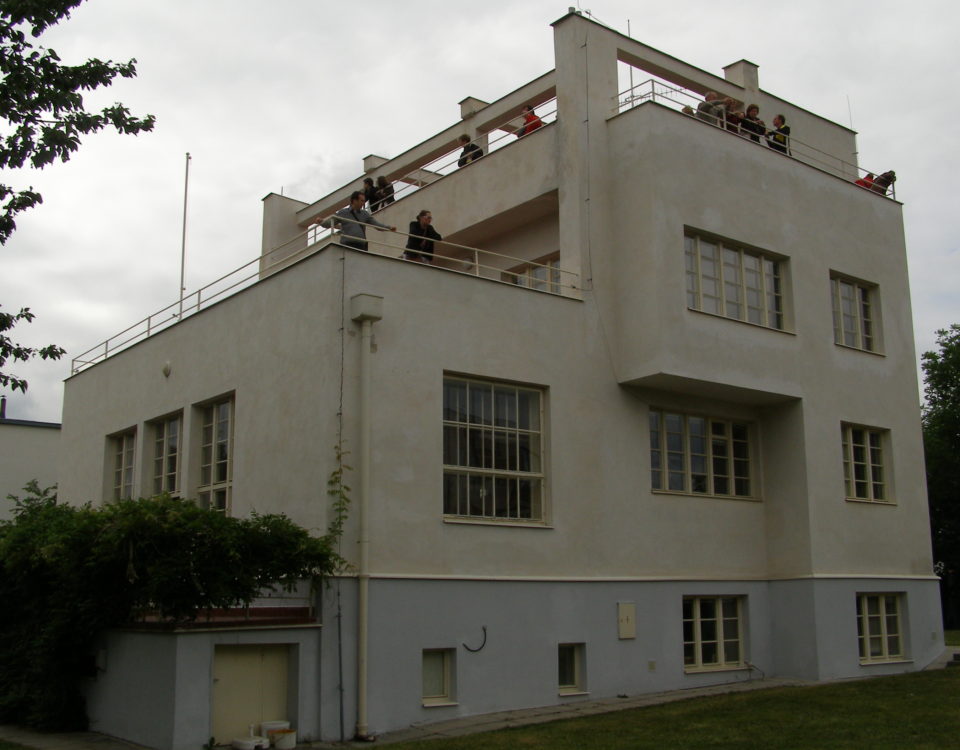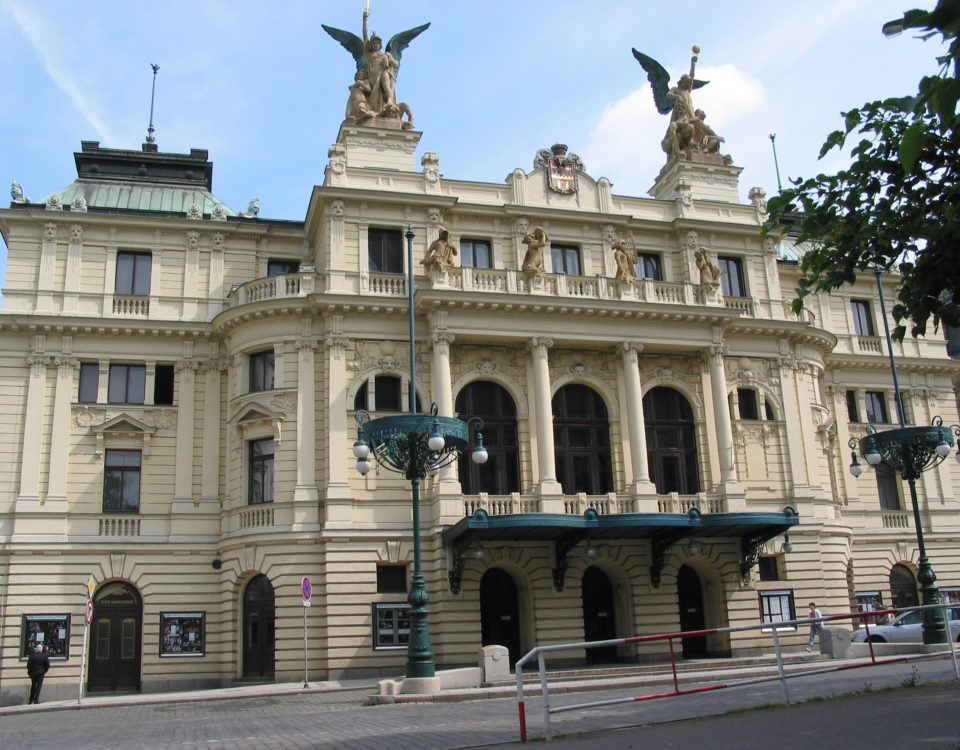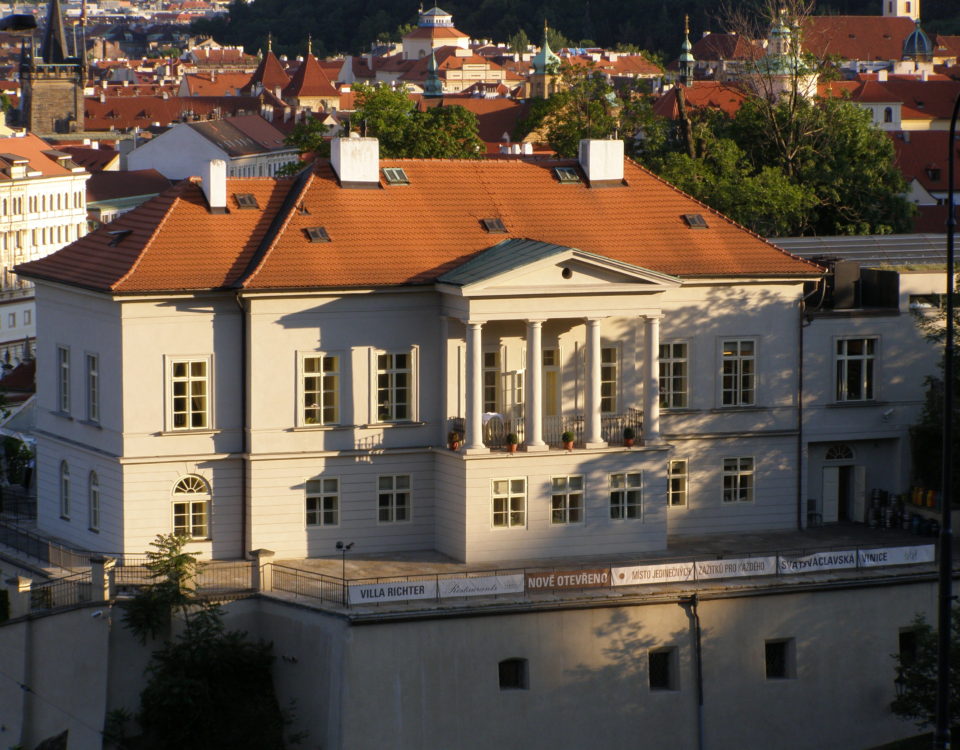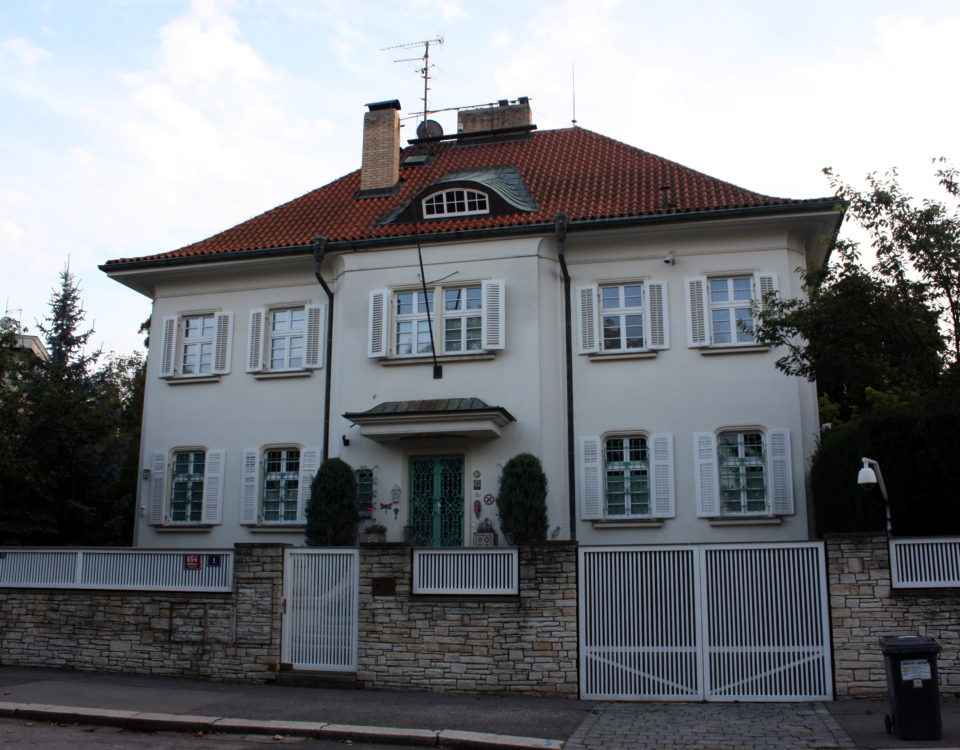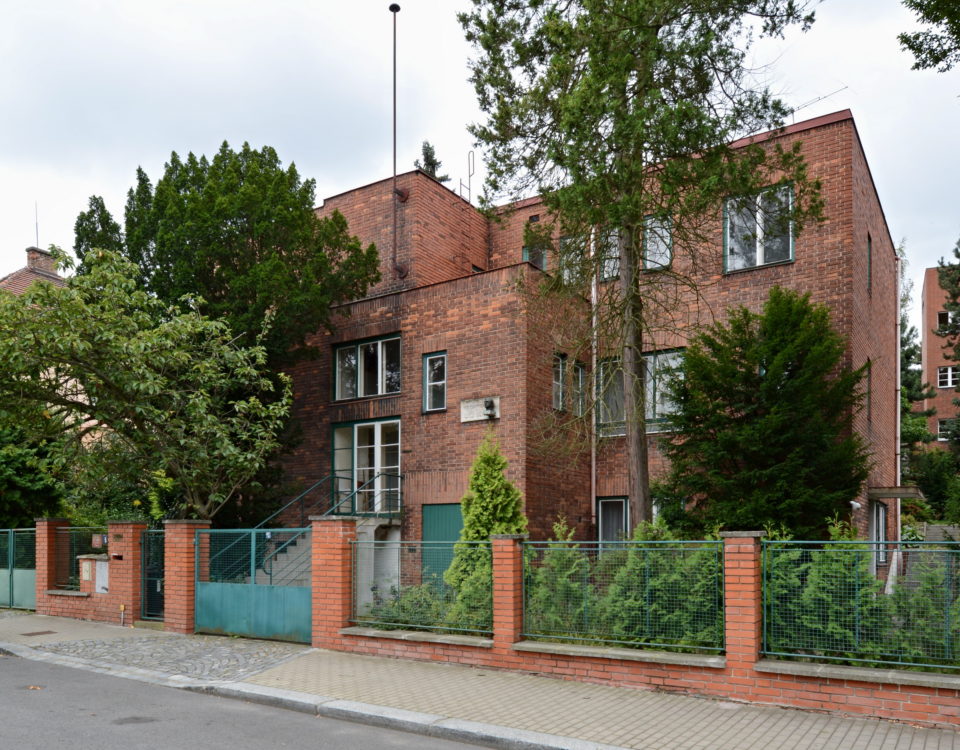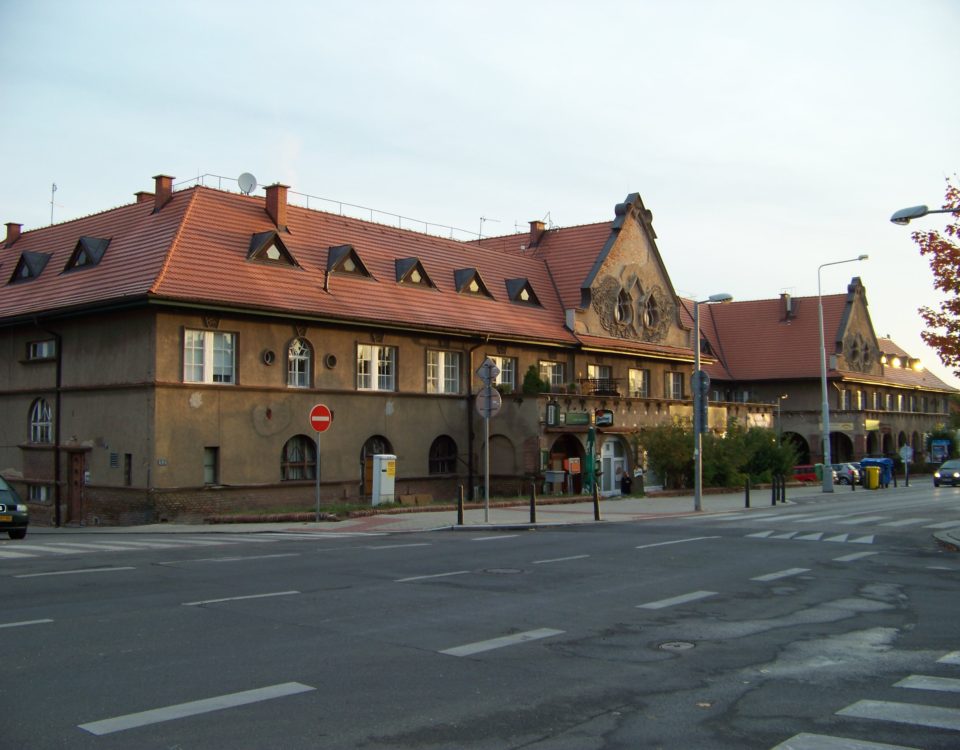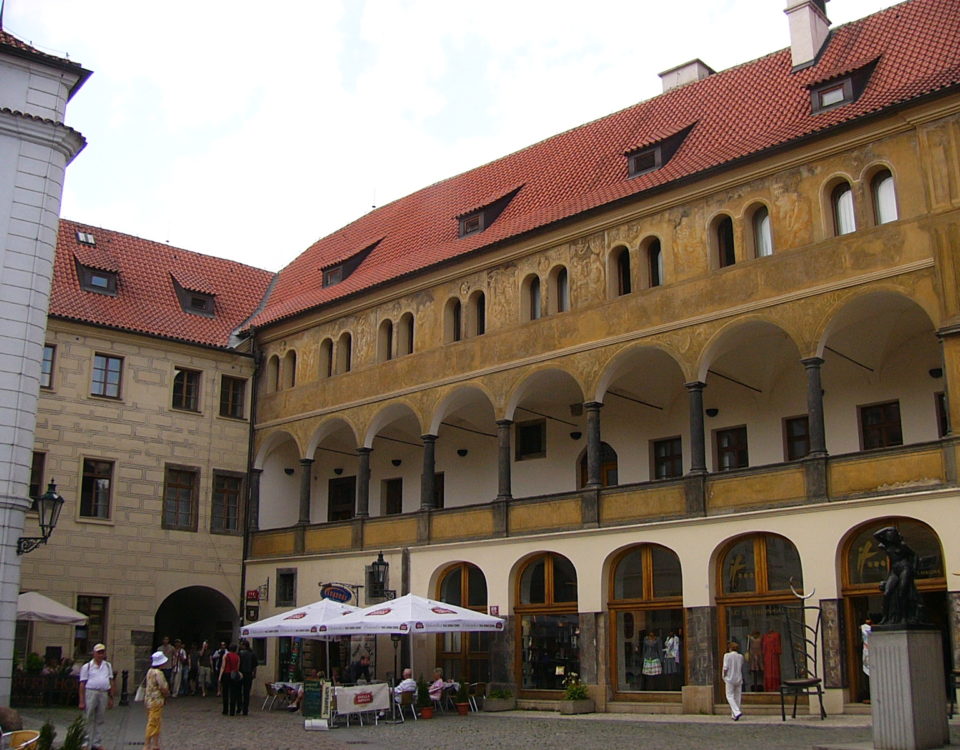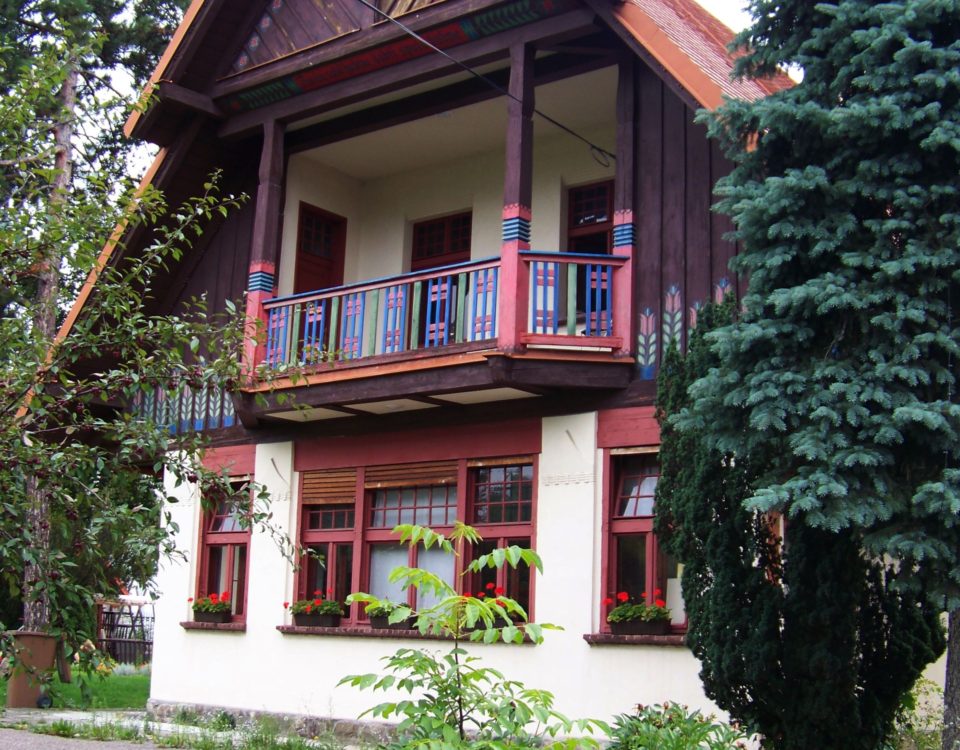#Prague Sights
December 12, 2018
This late Gothic tower is part of the Church of St Henry and St Kunhuta and, with its height of 65.7 m, is the highest freestanding bell tower in Prague. Today this structure offers visitors a view from the tenth floor, a restaurant, a museum and a gallery. Another unique feature is the carillon – a set of ten cast bronze bells in the tower attic, designed for listening in the interior of the tower. Contacts Jindřišská Tower (Jindřišská věž) Jindřišská 110 00 Praha 1- Nové Město +420 224 232 429 +420 608 346 521 Follow us on Facebook http://www.jindrisskavez.cz info@jindrisskavez.cz Object history The tower of the late gothic style (1472 – 1476) built as a separate belfry of Italian model. After the fire in 1745 it was adapted in the baroque style and in 1870s rebuilt in a gothic style (architect Mocker). The clock on a tower […]
December 12, 2018
This Villa in Smíchov bears the name of lawyer Joseph Winternitz, and was built for his family in 1932. The architects he chose were Adolf Loos (one of the founders of modern architecture) and Karel Lhota. Villa Winternitz is the last building by Adolf Loos that he saw built in his lifetime. Like the Müller Villa, it is characteristic of the Loos arrangement of space (the so-called Raumplan). Racial prejudice forced the family to leave the Villa in 1941 and they never went back. Under the restitution, the Villa reverted to the descendants of the original owners, who managed to restore it to its former glory. Contacts Winternitz Villa Na Cihlářce 10 150 00 Praha 5- Smíchov Follow us on Facebook http://www.loosovavila.cz loosovavila@gmail.com Source: https://www.prague.eu/en/object/places/2843/winternitz-villa
December 12, 2018
This prestigious theatre with a history over a century old is one of the cornerstones of Prague theatrical life. The main stage presents popular comedies, musicals and significant dramas; the theatre’s attic space – the “Rehearsal Room” – is home to more intimate productions. Contacts Vinohrady Theatre (Divadlo na Vinohradech) náměstí Míru 7 120 00 Praha 2- Vinohrady +420 800 900 888 +420 224 257 601 https://www.divadlonavinohradech.com pokladna@divadlonavinohradech.com Object history Together with the St. Ludmila’s Temple and the National House (Národní dům), the Na Vinohradech Theatre is the third dominant of Prague’s district Vinohrady. The development of Královské Vinohrady, where there were many theatrical companies in different wooden arenas brought about the idea of building a new “stone” theatre directly at Vinohrady (and it is still called the stone theatre today). It was supposed to be the second one after the National […]
December 12, 2018
Villa Richter is an important Classicist monument from the year 1832, and forms an eye-catching architectonic landmark when passing through Chotkovy Park. It stands in the St Wenceslas vineyard, the oldest vineyard in Bohemia. Exceptional views of romantic Prague are enhanced by sitting in one of three diverse restaurants focused on experiential dining. Contacts Villa Richter (Richterova vila) Staré zámecké schody 6/ Na Opyši 5 118 00 Praha 1- Hradčany Object history It can be found in the St. Václav’s Vineyard below the Richter’s House, to be accessed from the Old Castle Stairs or via a wicket from the Black Tower. The building of architect J. Peschka from 1832 is one of the most significant Classicist villas in Prague, together with the Kinský Summer House. It was the seat of the Cuban Embassy after the war, and later of the State […]
December 12, 2018
At one time, the villa at this address was the most important in Prague – President Václav Havel lived here with his first wife Olga from 1995. The second First Lady, Dagmar Havlová, also lived in the “presidential villa” for a while. Contacts Villa at Dělostřelecká St. No. 1 Dělostřelecká 1/654 Praha 6- Střešovice Source: https://www.prague.eu/en/object/places/3019/villa-at-delostrelecka-st-no-1
December 12, 2018
About halfway down Na Dračkách St., at number 5, noted Czech painter and graphic artist Václav Špála built a villa and studio. The house was designed by architect Otakar Novotný, who specialized in red-brick, Dutch-type architecture. Contacts Václav Špála Villa Na Dračkách 5 Praha 6- Střešovice Source: https://www.prague.eu/en/object/places/3013/vaclav-spala-villa
December 12, 2018
The largest airport in the Czech Republic, it handles nearly 13 million passengers yearly. Sixty airlines connect Prague directly to over 150 destinations around the world. The first airplane landed at Ruzyně on April 5, 1937. Thanks to the gradual modernisation of the check-in facilities, the runways, and the technical facilities as well as due to the development of new technologies and services, the airport was recognised in 2011 as the most actively developing airport in the world. Contacts Václav Havel Airport Prague (Mezinárodní letiště Václava Havla Praha) K Letišti 6 161 00 Praha 6- Ruzyně +420 220 111 888 http://www.prg.aero Source: https://www.prague.eu/en/object/places/1371/vaclav-havel-airport-prague-mezinarodni-letiste-vaclava-havla-praha
December 12, 2018
The Ořechovka neighbourhood was planned as a homogenous residential area in the style of an English “garden city”. The focal point of the central square was a building by the aforementioned architect Vondrák that housed the shopping and social facilities for the area. It included a large theatre and dance hall, cinema, restaurants and a café. The building, in dire need of renovation, is notable for its Art Nouveau and Cubist-influenced architecture. Contacts Ústřední budova Ořechovka (Ořechovka Central Building) Na Ořechovce 30A Praha 6- Střešovice Source: https://www.prague.eu/en/object/places/3016/ustredni-budova-orechovka-orechovka-central-building
December 12, 2018
One of the most important historical sites in Prague, this block of buildings, probably built in the 11th century, was originally a fortified merchants’ yard, where customs duties – ungelt – were collected. The most important building here is the Granovský Palace with its arcaded loggia, one of Prague’s best preserved Renaissance treasures with beautiful sgraffito, and murals that depict scenes from the Bible and from Greek mythology. Contacts Týn Yard (Týnský dvůr) – Ungelt Týnská / Štupartská / Malá Štupartská 110 00 Praha 1- Staré Město Object history The oldest name of the area between the churches of St. James (Jakub) and Virgin Mary before Týn is Týn or Týn Yard. The word týn means an enclosure, a fenced area, the former word otýniti used to mean to enclose. It originated from the Celtic word dunum – a hillfort, a fenced area, a fence; from Germanic tuna, German Zaun, English town. It was […]
December 12, 2018
This villa was built from 1902 to 1903 for František Trmal, the director of the public business school, based on designs by the architect Jan Kotěra. The house is a unique synthesis of Art Nouveau geometric ornamentation, English country architecture, and Slavic traditions. The villa is currently home to an exhibition about Kotěra’s work and home life at the beginning of the 20th century. Contacts Trmal Villa (Trmalova vila) Vilová 11/91 100 00 Praha 10- Strašnice +420 274 777 306 http://www.trmalovavila.eu e.henkrichova@foibos.cz Object history The Trmal’s villa (Trmalova vila) is located in the district of Prague 10, at the interface of the streets Vilová and U Nových vil. It was built in the years 1902 and 1903 and it builds on Czech folk architecture. The author of the building project is a significant Czech architect Jan Kotěra (1871 – 1923). The building […]

